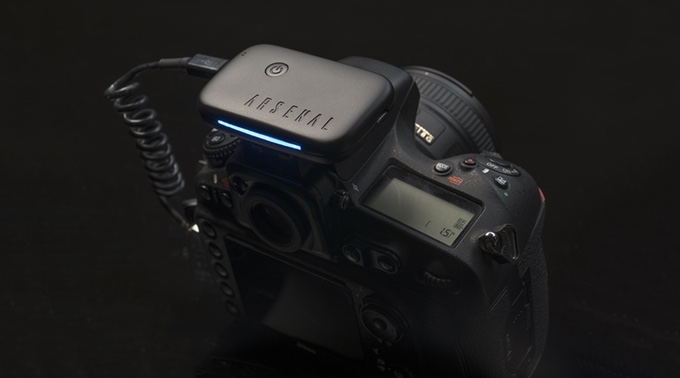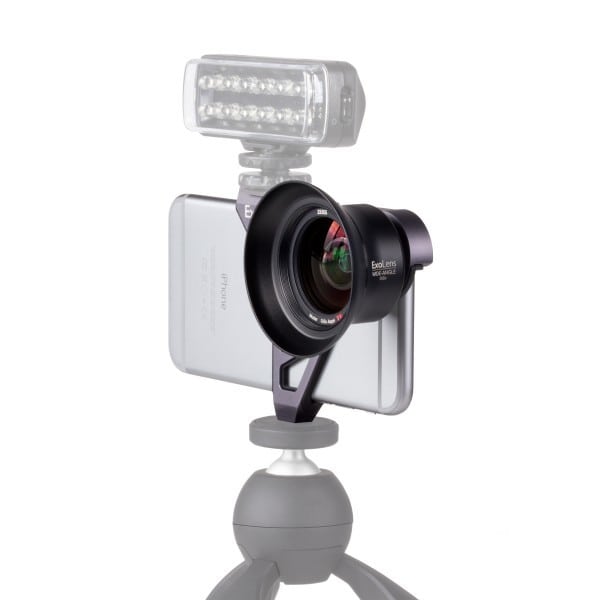Share
6 New Pieces of Photo Gear, Ranked
God bless the companies that push the boundaries of photography. But trailblazing ain’t easy, and for every product that succeeds, there is a dum...

God bless the companies that push the boundaries of photography. But trailblazing ain’t easy, and for every product that succeeds, there is a dumpster filled with broken dreams. Here are 6 new pieces of new gear with our ranking from “might succeed” to “no way.”
6. Intrepid 8×10 Camera

I love what the guys at Intrepid Camera Co. are doing. As film photography celebrates an on-going resurgence, this small UK-based company is hand-making inexpensive, light, large format cameras. After two generations of their 4×5 camera, they are moving into the 8×10 realm with a £480 option.
I have no doubt that the team did a decent market analysis before embarking on this project, and they certainly aren’t jeopardizing the solvency of their business by building this camera. The issue is going to come down to the photographers, many of whom I suspect might not have never shot 8×10 before. If you thought 4×5 was huge, unwieldy and slow, you’ll have twice the angst with 8×10!
The image quality is stunning, but what are you going to do with a stack of 8x10s? Are you gonna use 8×10 color Polaroid at $20/sheet? Do I want one? Yes. Will I get one? No, you.
5. Light L16

I am very bullish on the promise of computational photography to alter the landscape of photography. Light’s L16 uses an array of lenses of varying focal lengths that are quickly stitched together with software – similar to iPhone 7 Plus – resulting in an extremely thin form factor that is more akin to a phone than a camera. And after a 2 year wait, I’m champing at the bit to see the results.
But take a moment to look at the smudges on your phone. Some undoubtedly arise from tapping and swiping, but others come from simply holding the device. The size of the L16 – one of its big pluses – makes it a device that you might put in your pocket, which means that grabbing it out of your pocket will introduce smudges on the lenses. It might sound trivial, but grime can really affect image quality. Go ahead, put a big palm print on your Zeiss Otus, and let me know how that works out.
Are you really going to carry a microfiber cloth with you and wipe down your camera before each use? Unless the image quality and low light performance are significantly better than your camera, convenience might unfortunately triumph quality again. The multi-lens approach will undoubtedly remain as an emerging class of device, but will the form factor have to evolve to be a success?
4. Arsenal

Arsenal raised over $1.7 million on Kickstarter, so how will this “intelligent camera assistant” fail? I suspect the 10,000 backers will find that they don’t need it regularly and it will end up in the drawer. Some of the features (e.g. intervalometer, focus stacking, app integration) are very useful. And the idea of attaching what amounts to a programmable computer to your non-programmable camera seems like a step in the right direction of “app”-ifying the camera.
But the best features of the device will likely be copied by camera manufacturers and app developers rendering this assistant into a paperweight.
3. Prynt Pocket

The success of Fuji’s Instax cameras and the rise of imitators like the Leica Sofort might suggest a market potential for external printers for your camera phone. And in fact, a number of devices like the Instax SP-2 and the Polaroid ZIP already exist. Part of the fun of Instax is the kitschy styling in a dedicated package. There are no plugs or Bluetooth pairings to worry about. Slap in the film cartridge and go.
The Prynt Pocket will not fit even fit into dad jeans pockets. It looks sturdy enough, but I’m not convinced that connecting massive devices to a Lightning or USB-C port is appealing to the average consumer (DxO One anyone?) If you really need external printing, the Instax SP-2 is only $10 more from a company that you know will be around for a while.
2. Zeiss Milvus 35mm f/1.4

On the plus side, the newly announced Zeiss Milvus 35mm f/1.4 is weather sealed and “practically no chromatic aberrations.”
The minuses are best explained by comparison:
- The Nikon 35mm f/1.4 is 3.52″ long, weighs 600 grams and has a street price of $1499.
- The Sigma ART 35mm f/1.4 is 3.7″, weighs 665 grams and has a street price of $899.
- The Zeiss Milvus 35mm f/1.4 is 4.9″ long, weighs 1174 grams, has NO autofocus, and has a street price of $1999.
No, I haven’t tried the lens. But I know this: lenses are like sushi. The law of diminishing returns plays out spectacularly on the price/performance curve. Are you really going to spend $2k to manual focus a lens that weighs well over a kilo irrespective of image quality?
1. ExoLenses

This makes absolutely no sense. The ExoLens PRO by Zeiss Telephoto Kit is a $199, 100g, Zeiss-badged telephoto lens for your phone which adds more than 2 inches of thickness. Really? Really?


